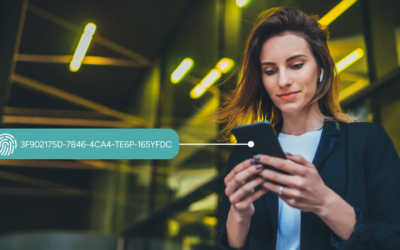Now that people are active in the city centres again, retailers can attract many new customers to their stores. Modern drive-to-store strategies offer a variety of solutions to advertise efficiently and with little dispersion effects using the latest technologies.
Nowadays, German companies are increasingly using omnichannel strategies, according to the country report „The Omnichannel Journey in Germany“ by IDG. For retailers, this means that they should use all the advantages of drive-to-store to keep up with and differentiate themselves from the competition.
You can find below the top 3 advantages of a successful drive-to-store strategy:
1. Multiply the impact with omnichannel
Drive-to-store is ideal for the use of omnichannel strategies. Geo-data can be used to determine who has already been addressed by DOOH ads. Experience shows that the use of a second channel in drive-to-store campaigns significantly improves the advertising impact. Retargeting through e.g. mobile display enables retargeting and increased advertising awareness. Due to their proximity to the point of sale, advertising media such as mobile display or programmatic audio are particularly well suited for localised targeting in addition to classic DOOH.
This allows retailers to target audio campaigns based on the smartphone’s geographic location, immediately entering the consumer’s mind with an ad and an address, directing them to a nearby point of sale. While audio has been relatively slowly integrated into drive-to-store strategies, programmatic audio inventory is currently growing significantly, providing retailers with another relevant advertising channel to target customers via streaming and internet radio platforms.
A drive-to-store campaign is most effective when it dynamically and creatively displays the address of the nearest store, which currently occurs by embedding the store locator in the creative. With one click on the mobile display ad’s call-to-action and taking advantage of native mobile apps, the user’s GPS can then seamlessly guide them to the advertiser’s nearest location. No matter how drive-to-store is approached: For successful campaigns, advertising channels, audience segments, geo-targeting and creative should be optimally aligned. This is the only way to stay ahead of the competition.
2. Use Dynamic location targeting instead of traditional geotargeting
Geotargeting is a basic tool for drive-to-store campaigns. Traditionally, there are different methods: geofencing with radius, geotargeting by postcode, and targeting along the physical customer journey to the store (journey’s geofencing targeting). Geo-fencing is often combined with audience data, which places advertisements within a certain radius where the data indicates a large concentration of the target group.
In addition, there are enhanced opportunities with current technologies: The locations with high audience concentration or valuable customers change. These fluctuations can be monitored by continuously comparing the affinity and location of potential customers. This way, it can be dynamically determined at any time where the target group is actually located at the corresponding time. Thus, not only can dispersion effects be extremely reduced, but advertising effectiveness can also be increased.
These technical features and geo-data provide a wide range of possibilities for dynamic and continuous customer targeting. For example, as soon as a consumer leaves the house, he can receive targeted messages with ad motifs on his/her mobile device via omni channel platforms, which are dynamically optimised for omnichannel campaigns. Depending on where the consumer is, he will be shown a store nearby. These targeted offers take into account all stores that are near the user at a certain point in time and offer added value and purchase intent.
3. Know exactly what it is worth: the right KPIs for drive-to-store
In drive-to-store, the final store visit and the change in the number of visits is important for the evaluation of marketing measures. Digital platforms can use uplift studies to determine the statistical difference between people approached with advertising and those without advertising contact in the same period and thus provide uplift rates. The incremental visits are the results of the drive-to-store campaign. A cost-per-visit figure derived from this for comparing different campaigns can also be found on the platforms.
This data collection can be done on the basis of digital booking and the respective availability of digital data. The exact comparative data enables an evaluation of the advertising measures and subsequent adjustments. Drive-to-Store can be used completely digitally and benefits therefore from the modern evaluation possibilities. Even on a small scale, a significant uplift can be achieved and the most efficient measures can be identified.
A fast food restaurant, knowing that a competitor is closed on Sundays, can run a drive-to-store campaign targeting consumers who are travelling near the location on the same day. Such dedicated and selective actions are precisely the benefits that drive retailers. It is important to stay up-to-date and not only find the optimal levers mix, but also always be on the lookout for something new. With the vast majority of advertisers moving to drive-to-store, it’s not just about playing the drive-to-store game, but mastering it.



